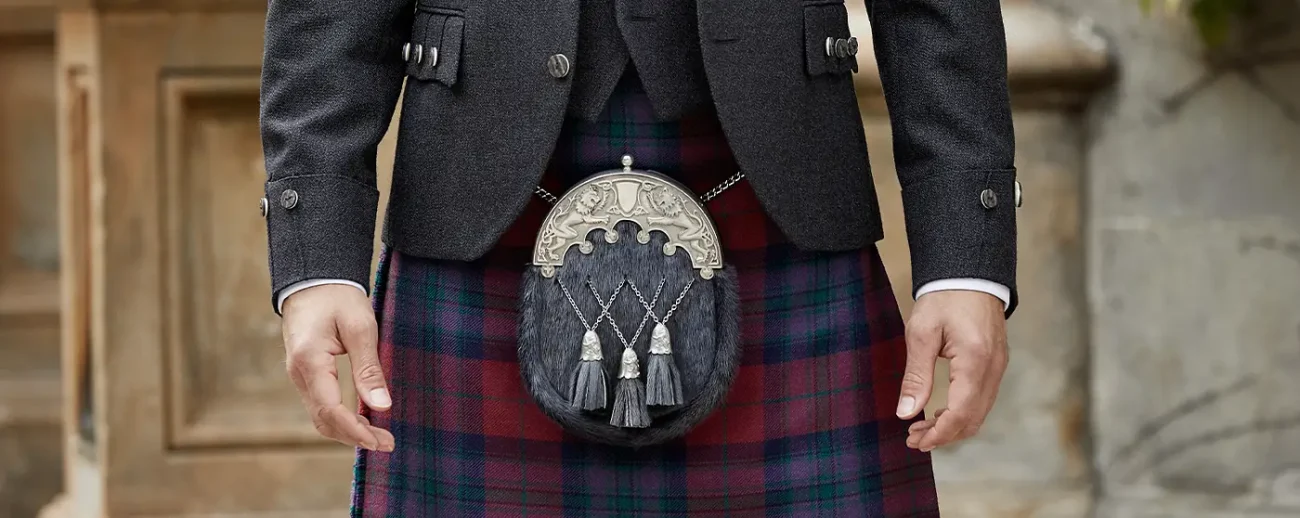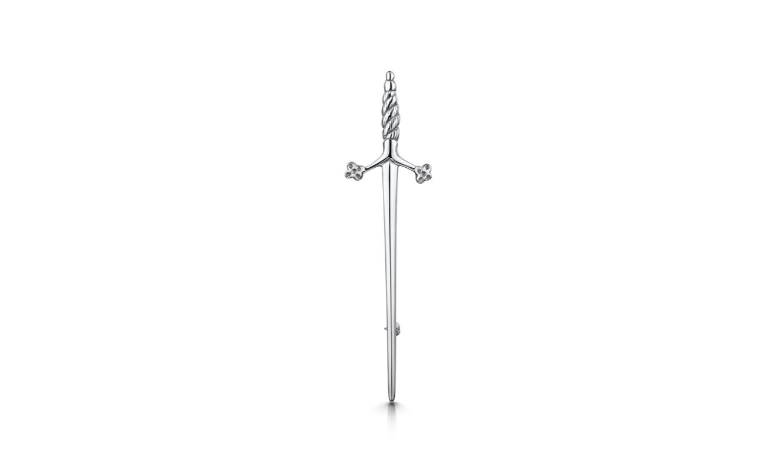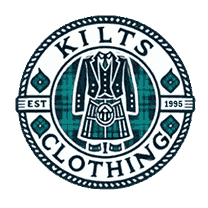How Do British Royals Style Their Kilts?

The traditional kilt, a distinctive piece of Scottish attire, has been embraced by the British royal family as a symbol of tradition and elegance. The royal family’s approach to styling and wearing kilts combines respect for tradition with personal flair. This article explores how British royals wear their kilts, focusing on their style choices and the specific elements that contribute to their polished look.
The Essentials of Royal Kilt Styling
Key Tartan Patterns
British royals are known for their association with several specific tartan patterns, each representing different aspects of their heritage and roles. The choice of tartan is a significant element in royal traditional kilt-wearing, reflecting both personal preference and ceremonial importance.
Royal Stewart Tartan:
This classic tartan, with its bold red, black, and green pattern, is perhaps the most recognized among royal mens traditional kilt. It’s often chosen for formal and high-profile events, where its vibrant colors and historical significance make a statement. When wearing the Royal Stewart tartan, the royals typically pair it with a traditional white dress shirt, a dark jacket, and a sporran (a small pouch worn at the front) adorned with silver detailing, which complements the regal nature of the tartan.
Balmoral Tartan:
Favored by Queen Elizabeth II and Prince Charles, this tartan features subtle shades of green and blue. It reflects the natural colors of the Scottish highlands and is often worn at Balmoral Castle and similar occasions. When styling the Balmoral tartan, the royals might opt for a more understated yet elegant ensemble, including a tweed jacket or waistcoat that harmonizes with the tartan’s muted tones. This look emphasizes a connection to the Scottish landscape and a more relaxed, country style.
Duke of Rothesay Tartan:
Worn by Prince Charles, this tartan is a variation of the Stewart pattern, tailored to suit his role as Duke of Rothesay. It features a distinguished and refined pattern, often incorporating subtle elements that reflect his personal taste. The Duke of Rothesay tartan is usually styled with a traditional highland dress, including a tailored jacket and a kilt pin that adds a touch of sophistication. The overall look is carefully coordinated to highlight both the tartan’s heritage and the Duke’s individual style.
Styling the Kilt: Components and Accessories
When it comes to styling their kilts, British royals pay meticulous attention to each component of their outfit. Here’s how they typically assemble their kilt ensemble:
Jacket and Waistcoat
Jacket:
The formal kilt outfit usually includes a tailored jacket, such as the Prince Charlie jacket. This jacket is characterized by its distinctive cut and embellishments, including decorative buttons and a high collar, which add a touch of sophistication to the outfit.
Waistcoat:
Underneath the jacket, royals wear a waistcoat, often in black or a coordinating color. The waistcoat complements the kilt and adds an extra layer of formality to the outfit, often featuring intricate patterns or embroidery that enhances the overall look.
Shirt and Tie
Shirt:
A dress shirt, typically white or light-colored, is worn under the jacket. The shirt provides a clean, crisp base for the kilt ensemble and is usually made from high-quality fabric to ensure a polished appearance.
Tie:
Royalty often pairs their kilt with a bow tie or a tie that complements the tartan pattern. This adds a polished, cohesive look to the outfit and is chosen to harmonize with the kilt’s colors and the formality of the occasion.
Accessories
Sporran:
The sporran is a small pouch worn at the front of the kilt. It serves both a practical and decorative purpose, holding small items and adding a traditional touch. The sporran worn by royals is often elaborately designed, featuring intricate details such as silver embellishments or elaborate patterns.

Kilt Pin:
A kilt pin is a decorative piece that holds the pleats of the kilt in place. It is both functional and ornamental, with designs ranging from simple to elaborate. Royals often choose pins that complement their tartan and add an element of elegance to the outfit.

Belt and Buckle:
A belt, often with a distinctive buckle, is worn around the waist over the kilt. The buckle may feature heraldic designs or other symbolic motifs, adding a personalized touch to the ensemble. This accessory helps secure the kilt and enhances its overall appearance.
Footwear and Hosiery
Footwear:
British royals typically wear black dress shoes with their kilts. The shoes are polished and formal, complementing the overall refined look. The choice of footwear ensures that the kilt outfit remains elegant and appropriate for formal occasions.

Hosiery:
British royals typically wear black dress shoes with their kilts. The shoes are polished and formal, complementing the overall refined look. The choice of footwear ensures that the kilt outfit remains elegant and appropriate for formal occasions.
Conclusion
British royals approach traditional kilts-wearing with a blend of traditional respect and personal style. From the selection of tartan patterns to the meticulous choice of accessories, their kilt ensembles reflect both the significance of Scottish attire and their individual preferences. Whether attending formal events or participating in ceremonial occasions, the royal family’s kilt styling continues to be a prominent feature of their sartorial choices, showcasing a timeless connection to Scotland's rich heritage.
FAQs
British royals often wear the Royal Stewart, Balmoral, and Duke of Rothesay tartans. Each pattern represents a distinct aspect of their heritage.
Royals style their kilts with a formal jacket, waistcoat, dress shirt, and matching tie or bow tie. They accessorize with a sporran, kilt pin, and belt.
They wear a sporran, kilt pin, and a belt with a decorative buckle. These accessories enhance the kilt’s traditional look.
Royals wear black dress shoes and knee-high socks, known as hose, which are often secured with garters.

